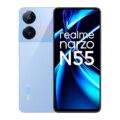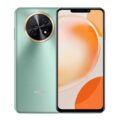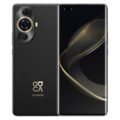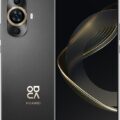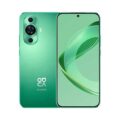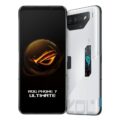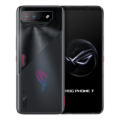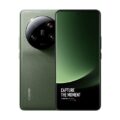- Homepage
- Main Catalog
- Mobiles
- Samsung Galaxy Quantum 2
Samsung Galaxy Quantum 2






-
Display: Dynamic AMOLED 2X, 120Hz, 1200 nits (peak)
-
Camera: Triple, 64 MP, f/1.8, 26mm (wide), 1/1.7X", 0.8µm, PDAF, OIS 12 MP, f/2.2, 123˚ (ultrawide), 1.12µm 5 MP, f/2.4, (macro)
-
Storage: 128GB
-
RAM: 6GB
-
CPU: Octa-core (1x2.96 GHz Kryo 485 & 3x2.42 GHz Kryo 485 & 4x1.78 GHz Kryo 485)
-
OS: Android 11, One UI 3.1
-
Battery: Li-Po 4500 mAh, non-removable
The Samsung Korean based company is a world recognized smartphone company that manufactures amazing gadgets. The Samsung Galaxy Quantum 2 arrives just after its predecessor the Galaxy A Quantum. The Quantum series takes security rather seriously as it comes with a special security chip. In comparison to its predecessor, the Quantum 2 comes with a better display, a powerful processor, an upgraded camera, a better fingerprint sensor and a host of other amazing features.
Samsung Galaxy Quantum 2 Price and Availability Review
The Samsung Galaxy Quantum 2 is on the high-side when it comes to the price but in all it is still affordable.
The Quantum 2 is priced $689. It can be purchased via online stores, on Samsung website, Amazon and other electronic retail stores.
Samsung Galaxy Quantum 2 Design Review
One would think that at the mention of Quantum then the design will be embellished in gold ornaments and silver toppings, but the Quantum series has just similar designs like the other Samsung smartphone designs.
The Galaxy Quantum 2 comes in a somewhat nice plastic (as usual) body with matte finish that keeps it immune to smudges caused by fingerprints. The build is something worthy of note, as it is highly durable and classy. It is 8.1 mm thick and weighs 176 grams which makes the device weight light. Just behind the phone you will find the triple camera setup neatly placed. On the sides you will fine the power button, volume rockers, and SIM and micro SD card slot. At the bottom you will fine the charging port, speaker, and microphone. There is an absence of 3.5mm audio jack.
Samsung Quantum 2 Camera Review
The Samsung quantum 2 comes with a triple camera setup. The triple main camera setup features a 64MP main camera with f/1.8 aperture, a 12MP ultrawide camera with f/2.2 aperture, and a 5MP macro camera with f/2.4 aperture. The Quantum camera comes with what we call ‘Optical Image Stabilization’ which helps to take quality stills and videos.
The rear camera records videos up to 4K resolution at 30 fps. There’s a selfie camera of 10 MP, f/2.2 which gives clean images, the selfie camera also records videos at 1080p@30fps
Samsung Quantum 2 Performance Review
The Samsung Galaxy Quantum 2 is powered by the Qualcomm Snapdragon 855+ chipset. The chipset comes with the Adreno 640 GPU that has a GPU frequency of 650 MHz. There is also a dedicated micro SD card slot for expanding the storage. The chipset helps in improving security and privacy.
Samsung Quantum 2 Battery Life and Charging Review
The Samsung Quantum 2 has a fair battery life. It come with a 4500 mAh battery capacity that can carry you through your daily work. Not withstanding excessive usage. The Samsung Quantum 2 supports 25W fast charging but the fast charger is not included in the box as you only get a 15W travel adapter.
Samsung Quantum 2 Software Review
The Samsung Galaxy Quantum 2 runs on One UI 3.1 based on Android 11.
The Samsung Quantum 2 offers you a great deal of impressive features, impeccable performance, camera setup and even a good battery life.
Specs
LAUNCH
| Announced | 2021, April 13 |
| Released | 2021, April 23 |
| Status | Available |
DEVICE
| Device Type | Smartphone |
| Model | Samsung Galaxy Quantum 2 |
| Versions | SM-A826S |
NETWORK
| 2G Network |
GSM 850 / 900 / 1800 / 1900 |
| 3G Network | HSDPA 850 / 900 / 1700(AWS) / 1900 / 2100 |
| 4G Network | 1, 2, 3, 4, 5, 7, 8, 12, 17, 20, 26, 28, 38, 40, 41, 66 |
| 5G Network | 78 Sub6 |
| Speed | HSPA 42.2/5.76 Mbps, LTE-A, 5G |
BODY
| Dimensions | 161.9 x 73.8 x 8.1 mm (6.37 x 2.91 x 0.32 in) |
| Weight | 176 g (6.21 oz) |
| SIM <strong>SIM</strong> (Subscriber Identity Module) is a small card that contains mobile network subscriber's account information. This allows the phone using the card to attach to a mobile network. The SIM card is most commonly associated with GSM and UMTS mobile networks. Moving a SIM card from one phone to another allows a subscriber to switch mobile phones without having to contact their mobile network carrier. SIM cards can also be used by a phone to store limited amounts of data, such as phone numbers and text messages. | Nano-SIM |
DISPLAY
| Display Type <strong>Display Technology => </strong> A number of display technologies and types used in mobile phones => TFT (Thin Film Transistor), IPS (In-Place Switching), OLED (Organic Light Emitting Diode), AMOLED (Active-Matrix Organic Light-Emitting Diode), Super AMOLED (an even advanced version of AMOLED), Resistive Touchscreen (Resistive touchscreens contain two layer of conductive material with a very small gap between them which acts as a resistance), Capacitive Touchsceen (Capacitive touchscreen technology consists of a layer of glass coated with a transparent conductor) | Dynamic AMOLED 2X, 120Hz, 1200 nits (peak)6.7 inches, 108. |
| Size | 4 cm2 (~90.7% screen-to-body ratio) |
| Resolution | 1440 x 3200 pixels, 20:9 ratio (~524 ppi density) 120Hz@FHD / 60Hz@QHD refresh rate |
| Aspect Ratio | 4:3 |
| Touch Screen | Yes |
PHONE MEMORY
| RAM (Memory) <strong>RAM</strong> (Random Access Memory) is a type of computer memory that can be accessed randomly, any byte of memory can be accessed without touching the preceding bytes that allows information to be stored and accessed quickly from random locations. RAM is the most common type of memory found in computer systems, smartphones, tablets and other electronic devices. | 6GB |
| Internal Storage <strong>Internal Storage</strong> is a data storage space (flash memory) mostly used in smartphones, tablets and other electronic devices where operating system, apps, music, photos, videos, files and other user data Is stored. | 128GB |
| Card Slot <strong>Memory Card Slot</strong> is a special slot for inserting a memory card. Memory cards allow you to expand the phone's built-in memory, A memory card (sometimes called a flash memory card or a storage card) is a small storage medium used to store data such as text, pictures, audio, and video, for use on small, portable or remote computing devices such as mobile phones, mp3 players, digital cameras. | microSDXC (dedicated slot) |
| Phonebook Memory | Yes |
| Call Record Memory | Yes |
MAIN CAMERA
| Camera Type | Triple |
| Camera Dimension |
64 MP, f/1.8, 26mm (wide), 1/1.7X&amp;amp;quot;, 0.8µm, PDAF, OIS 12 MP, f/2.2, 123˚ (ultrawide), 1.12µm 5 MP, f/2.4, (macro) |
| Camera Features | LED flash, panorama, HDR |
| Video Resolution | 4K@30fps, 1080p@30/60/240fps; gyro-EIS |
SELFIE CAMERA
| Camera Type | Single |
| Camera Dimension |
10 MP, f/2.2, (wide) |
| Camera Features | HDR |
| Video Resolution | 1080p@30fps |
HARDWARE PLATFORM
| Chipset <strong>Chipset</strong> is a group of integrated circuits designed to perform one or a more dedicated functions, often with real time computing constraints, Popular smartphones are equipped with more advanced embedded chipsets that can do many different tasks depending on their programming. | Qualcomm SM8150 Snapdragon 855+ (7 nm), QRNG security chipset |
| CPU <strong>CPU</strong> (Central Processing Unit) mostly known as processors, CPU processes instructions in order to carry out certain functions that make your device operate properly. Processors are often described as the brain of computers, smartphones and tablets, Smartphones and tablets rely on processors to carry out their every task, Processors are an incredibly important factor in selecting any type of computing device, including your smartphone. | Octa-core (1x2.96 GHz Kryo 485 & 3x2.42 GHz Kryo 485 & 4x1.78 GHz Kryo 485) |
| GPU <strong>GPU</strong> (Graphics Processing Unit) is a single-chip processor designed to rapidly manipulate and alter memory to accelerate the creation of images in a frame buffer intended for output to a display, This includes things such as lighting effects, object transformations, and 3D motion. | Adreno 640 (700 MHz) |
SOFTWARE PLATFORM
| Operating System <strong>OS => </strong> Every computer system run on a base software called Operating System (OS). Operating System controls all basic operations of the computer (such as smartphone, PDAs, tablet computers and other handheld devices). The Operating System allows the user to install and run third party applications (apps), apps are used to add new functionality to the device. | Android 11, One UI 3.1 |
| Java Support <strong>Java</strong> for Mobile Devices is a set of technologies that let developers deliver applications and services to all types of mobile handsets, ranging from price efficient feature-phones to the latest smartphones. Java is currently running on over 3 billion phones worldwide, and growing. It offers unrivaled potential for the distribution and monetization of mobile applications. | |
| Facebook <strong>Facebook</strong> is a popular free social networking website that allows registered users to create profiles, upload photos and video, send messages and keep in touch with friends, family and colleagues. The site is available in 37 different languages. | |
| Youtube <strong>Youtube</strong> is a popular free video-sharing website, Youtube is the largest video sharing site in the world, Millions of users around the world have created accounts on the site that allow them to upload videos that anyone can watch. |
CONNECTIVITY
| Bluetooth <strong>Bluetooth</strong> is a wireless communications technology for exchanging data between mobile phones, headsets, computers and other network devices over short distances without wires, Bluetooth technology was primarily designed to support simple wireless networking of personal consumer devices. | 5.0, A2DP, LE |
| Infrared <strong>Infrared</strong> connectivity is an old wireless technology used to connect two electronic devices. It uses a beam of infrared light to transmit information and so requires direct line of sight and operates only at close range. | |
| Wi-fi <strong>Wi-Fi</strong> is a popular wireless networking technology using radio waves to provide high-speed network connections that allows devices to communicate without cords or cables, Wi-Fi is increasingly becoming the preferred mode of internet connectivity all over the world. | Wi-Fi 802.11 a/b/g/n/ac, dual-band, Wi-Fi Direct, hotspot |
| Wi-fi Hotspot | |
| FM Radio | No |
| GPS <strong>GPS</strong> The Global Positioning System is a satellite-based radio navigation system, GPS permits users to determine their position, velocity and the time 24 hours a day, in all weather, anywhere in the world, In order to locate your position, your device or GPS receiver must have a clear view of the sky. | Yes, with A-GPS, GLONASS, GALILEO, BDS |
| USB | USB Type-C 2.0, USB On-The-Go |
| NFC <strong>NFC</strong> (Near field communication) is a set of standards for smartphones and similar devices to establish peer-to-peer radio communications with each other by touching them together or bringing them into proximity, usually no more than a few inches. | |
| HDMI <strong>HDMI</strong> (High-Definition Multimedia Interface) is a compact audio/video interface for transferring uncompressed video data and compressed or uncompressed digital audio data from a HDMI-compliant source device to a compatible computer monitor, video projector, digital television, or digital audio device. |
SOUND
| Loudspeaker | Yes, with stereo speakers |
| Speaker Location | Bottom |
| Audio Recording |
MESSAGING
| SMS <strong>SMS</strong> (Short Messaging Service) is a text messaging service component of phone, Web, or mobile communication systems. It uses standardized communications protocols to allow mobile phone devices to exchange short text messages over the networks. | Yes |
| MMS <strong>MMS</strong> (Multimedia Messaging Service) is a standard way to send messages that include multimedia content (audio clips, video clips and images) to and from mobile phones over wireless networks using the WAP protocol. | |
| Email <strong>Email</strong> (Electronic Mail) is a system for receiving, sending, and storing electronic messages, Similar to a letter, email is text messages that may contain files, images, or other attachments sent via the internet to a recipient by using applications and software prograps. An email address is required to receive email, and that address is unique to the user. | Yes |
| IM <strong>IM</strong> (Instant Messaging) is an exchange of text messages through a software application, it enable you to create a kind of private chat room with another individual in order to communicate in real time over the Internet. | Yes |
BATTERY
| Battery Type <strong>Battery Type => </strong> Cell phones run on various kinds of batteries depending on the manufacturer, phone size or shape and features. There are basically four types of cell phone batteries => Lithium Polymer, Lithium Ion, Nickel Metal Hydride and Nickel Cadmium. | Li-Ion (Lithium Ion) |
| Capacity <strong>Battery Capacity</strong> is a measure (typically in Amp-hr) of the charge stored by the battery, and is determined by the mass of active material contained in the battery. The battery capacity represents the maximum amount of energy that can be extracted from the battery under certain conditions. | 4500 mAh |
| Placement | Non-removable |
| Fast Charging | Yes, 25W |
OTHER FEATURES
| Sensors <strong>Sensors</strong> are electronic components that detects and responds to some type of input from the physical environment. The specific input could be light, heat, motion, moisture, pressure and location, The output is generally a signal that is converted to use in computing systems, a location sensor, such as a GPS receiver is able to detect current location of your electronic device. |
Fingerprint (under display, ultrasonic), accelerometer, gyro, proximity, compass |
| Colors | Black, White, Violet |
| Games Support | Yes |
| Box Contents |
- A Samsung Galaxy Quantum 2 - A USB-C cable. - A printed setup guide and instructions. - A SIM card tool. |









